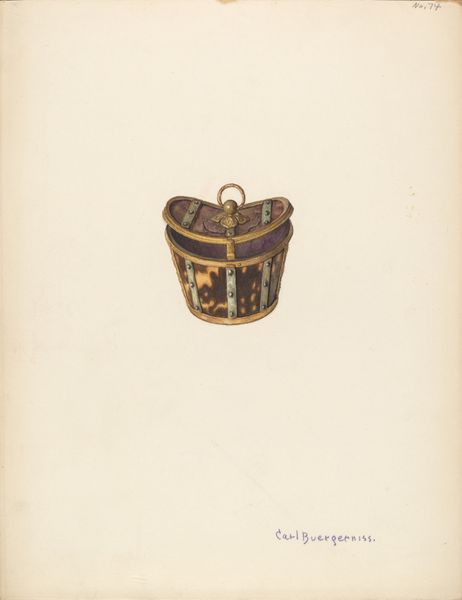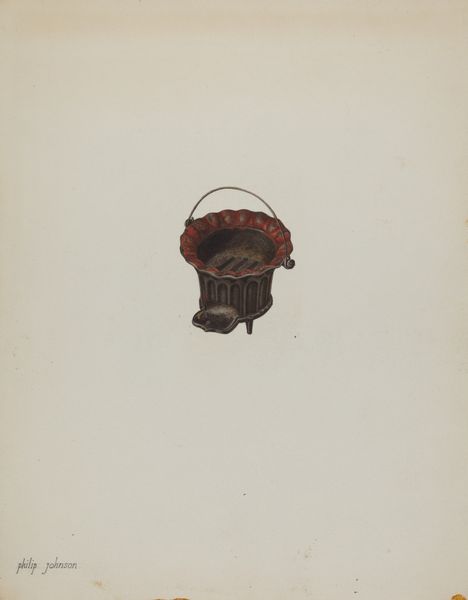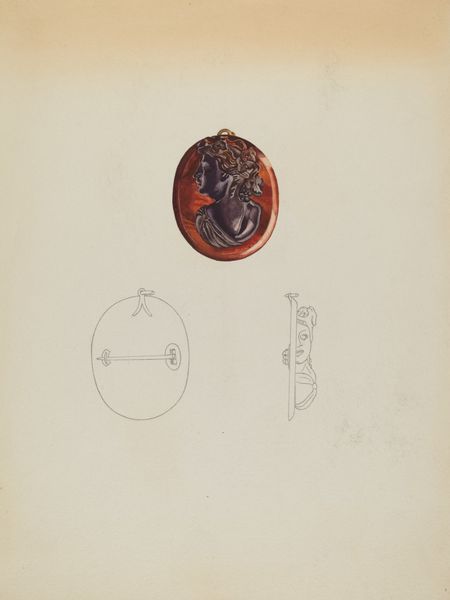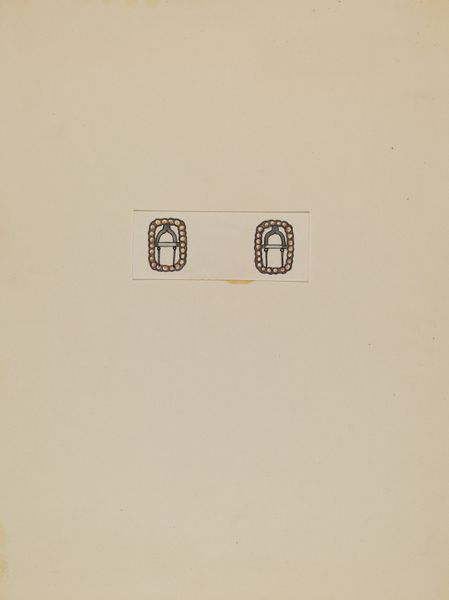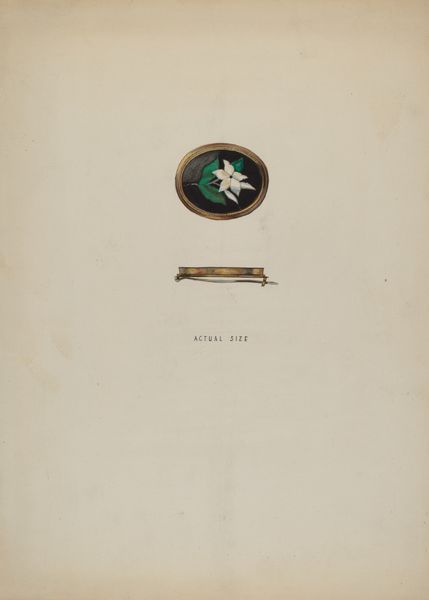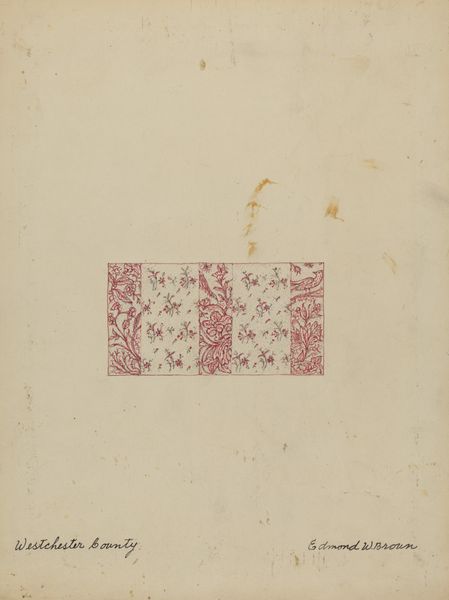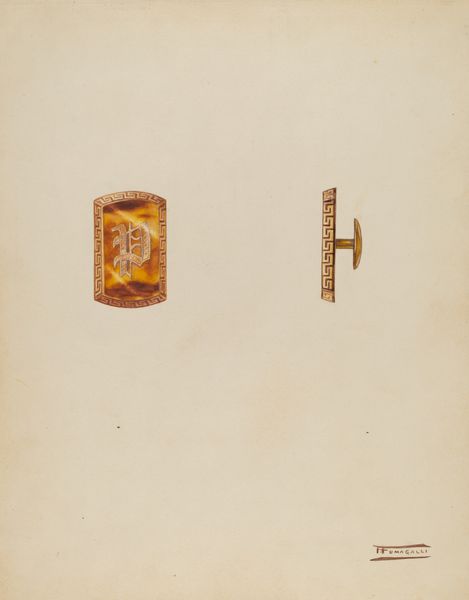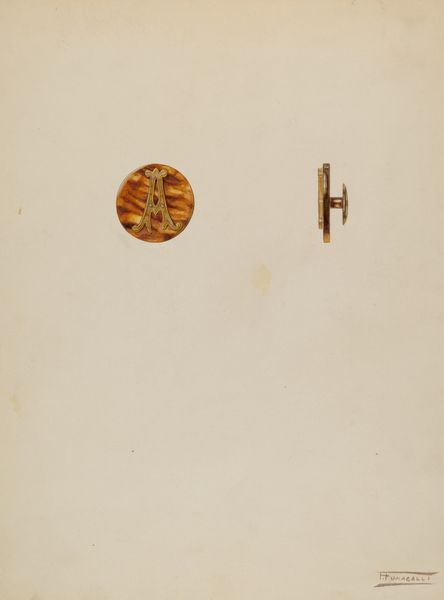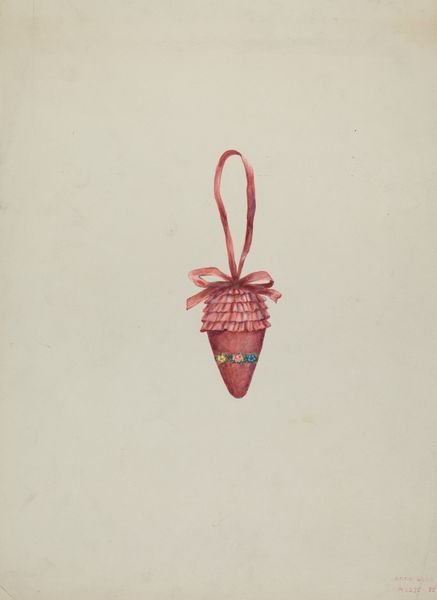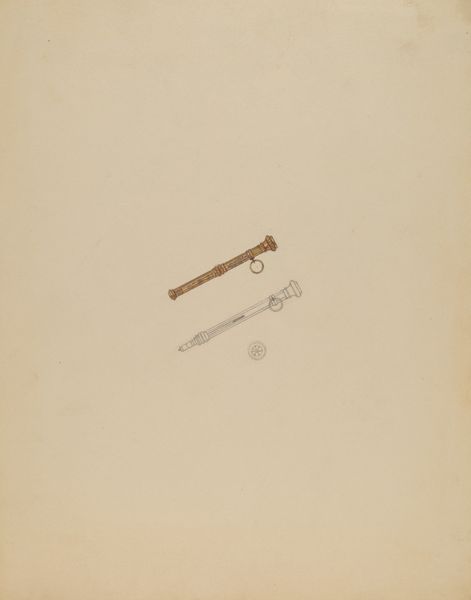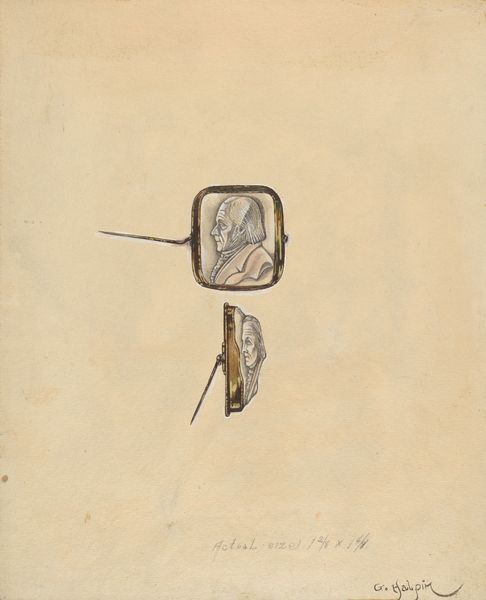
drawing, watercolor
#
drawing
#
water colours
#
watercolor
#
ceramic
#
watercolour illustration
Dimensions: overall: 22.4 x 28.2 cm (8 13/16 x 11 1/8 in.)
Copyright: National Gallery of Art: CC0 1.0
Curator: This delightful little watercolour, entitled "Pin Cushion," comes to us from the hand of Edna C. Rex, around 1936. Editor: Well, hello there, practical prettiness! It feels almost coy in its presentation, floating alone on the paper like a thought bubble. There is a certain air of quiet industry to it, doesn’t it just whisper "domestic bliss?" Curator: Indeed! Rex's artistic practice is really interesting in this regard. Her watercolours frequently depict objects of domestic life and craft, calling into question the social frameworks for separating labour from more 'refined' forms of creative production. A humble pin cushion given this type of careful treatment transforms it into something quite...charged. Editor: It's definitely more than just a pin cushion. The floral fabric combined with the green ribbon hint at a quiet rebellion, or at least, a yearning for more than mere function. There’s a tension between utility and beauty. What kind of labour was involved in making something beautiful AND useful? Curator: Exactly! We might consider the labour of women in the home, the creation and maintenance of these kinds of very intricate objects and artistic representations, and think about its connections to both commerce and pleasure. Watercolours and textiles became a socially accepted creative pursuit, but the economic contributions of this practice were often rendered invisible or inconsequential. Editor: Fascinating. When I see this, I don’t necessarily think 'industry' straight away...the floral fabric gives it such a romantic vibe. It seems almost plucked from a Victorian novel, all understated elegance and hidden depths. What are your thoughts about technique and composition here? It seems purposefully understated and a bit withdrawn. Curator: You are right; Rex has rendered this quite spare. This makes sense if we consider that drawings, sketches, and the like were sometimes deployed by women artists of the time as documents of record. Think of Anna Atkins using photography for her cyanotypes, for example. Everyday objects and practices—all captured in careful, detailed compositions, pointing towards a history of work and gender. Editor: Hmm, yes I see the historical importance layered within this now. What started off to me as a whisper of domestic prettiness now also speaks of deeper social implications and artistic intent. Curator: Precisely! Rex offers a window into not just a household object but the entire ecosystem of creation and consumption in its day.
Comments
No comments
Be the first to comment and join the conversation on the ultimate creative platform.
